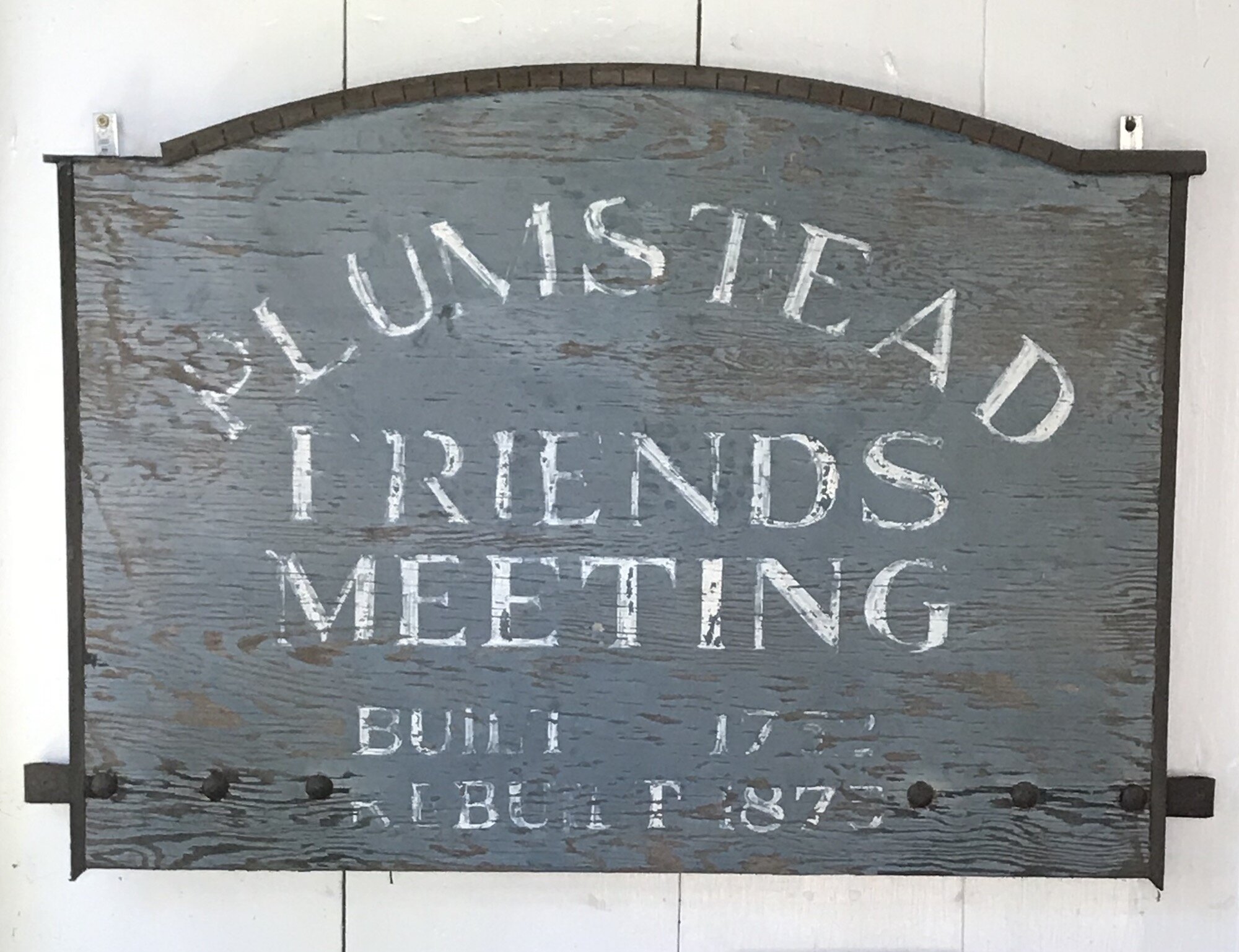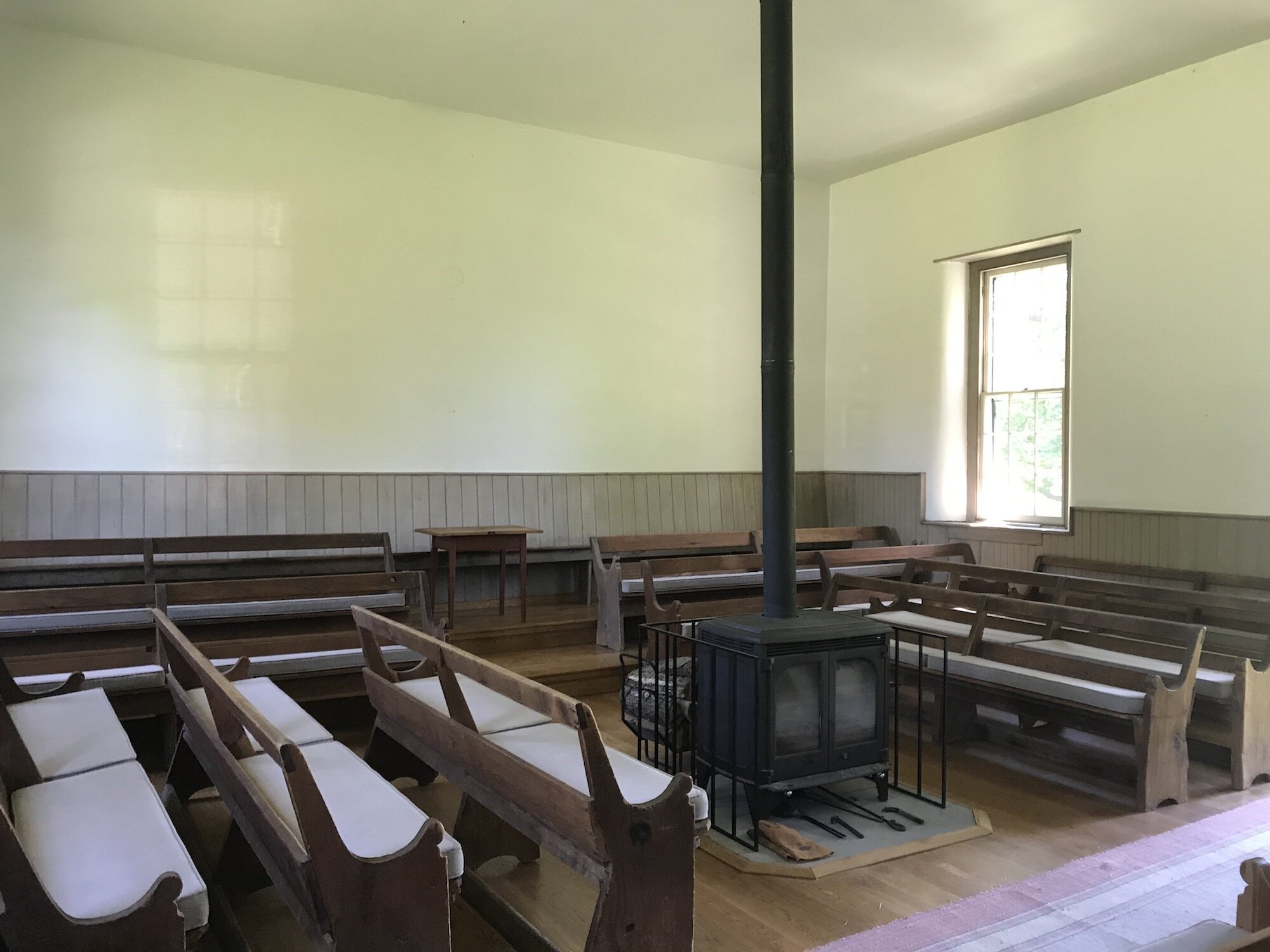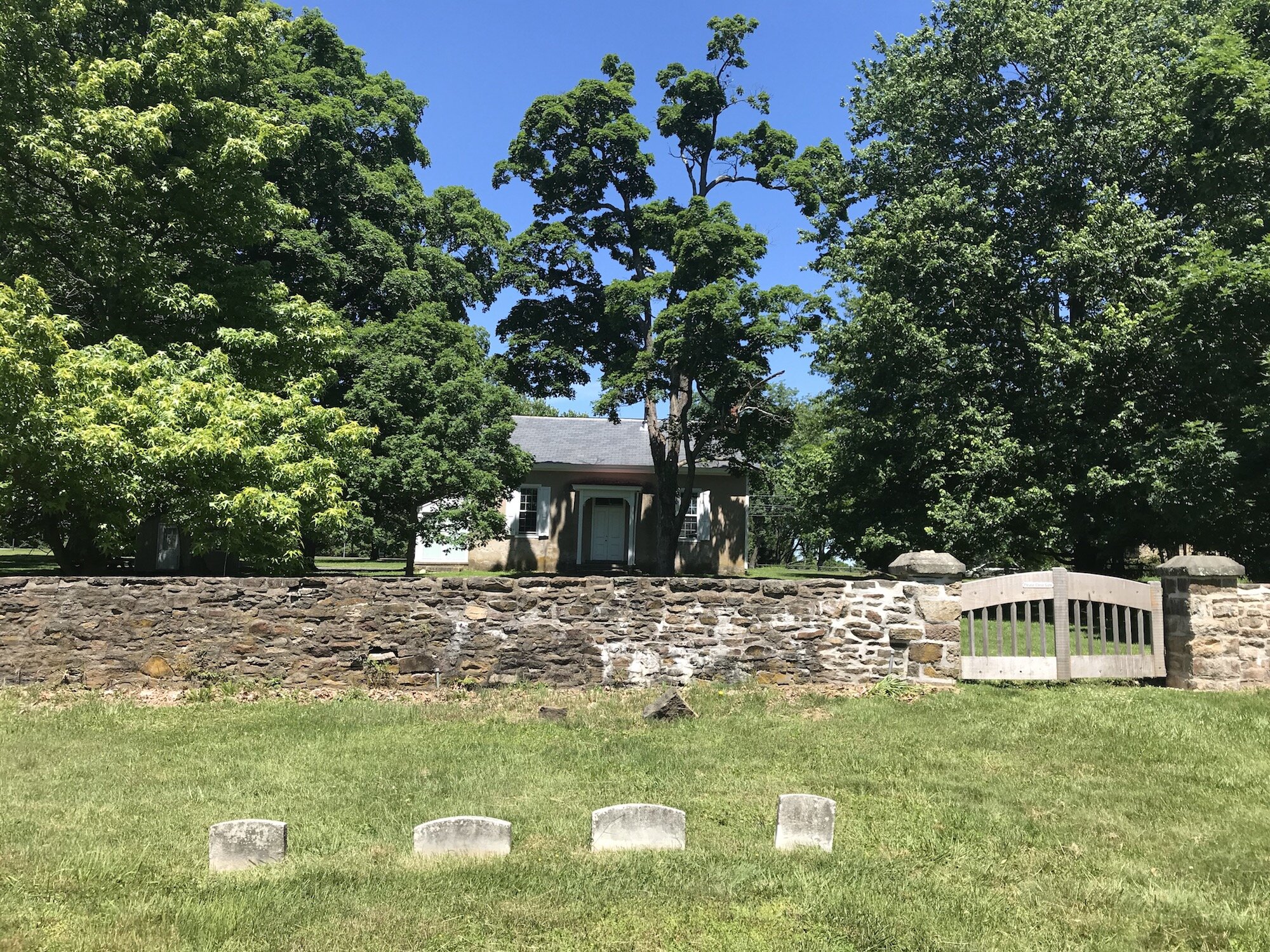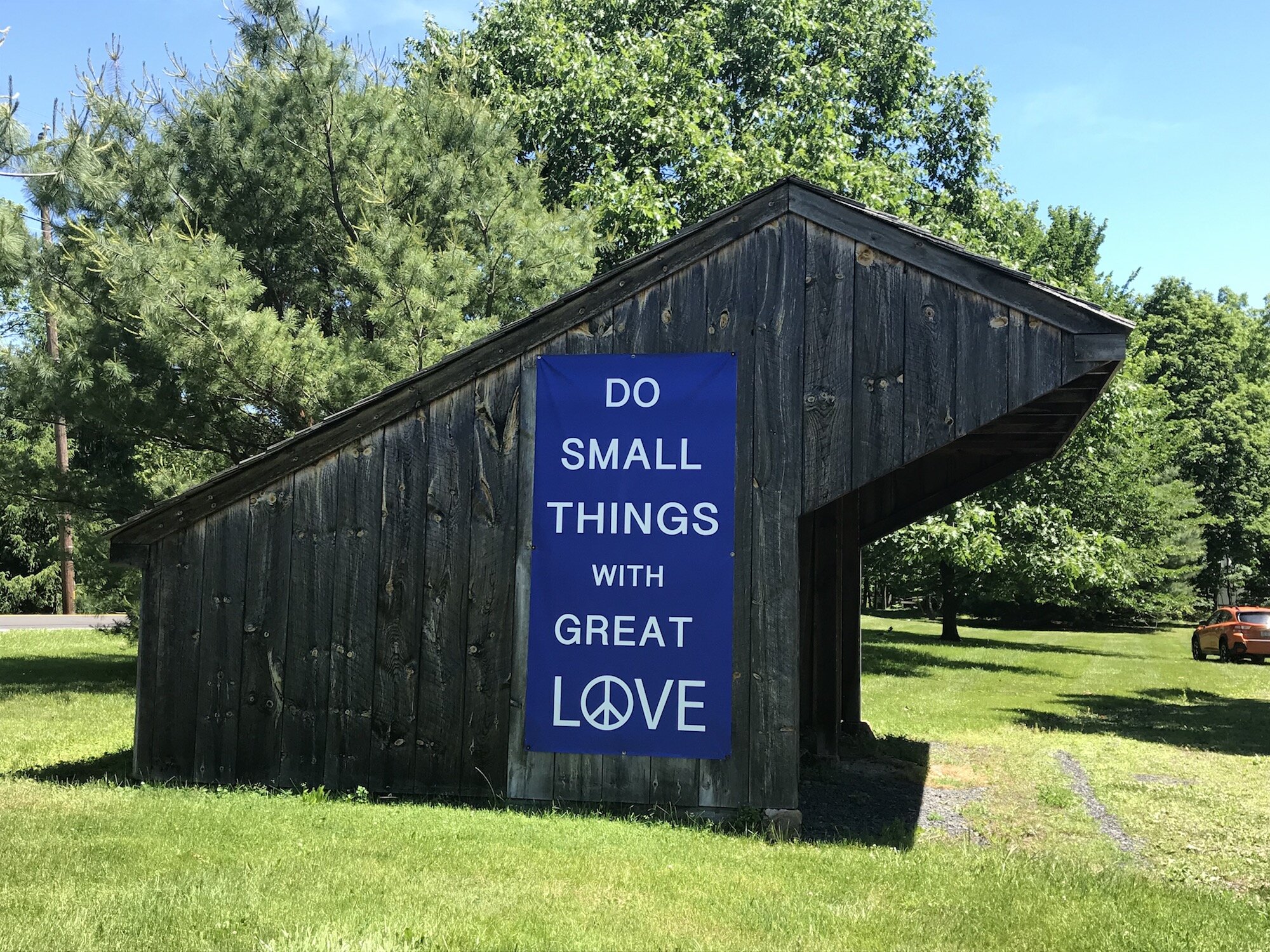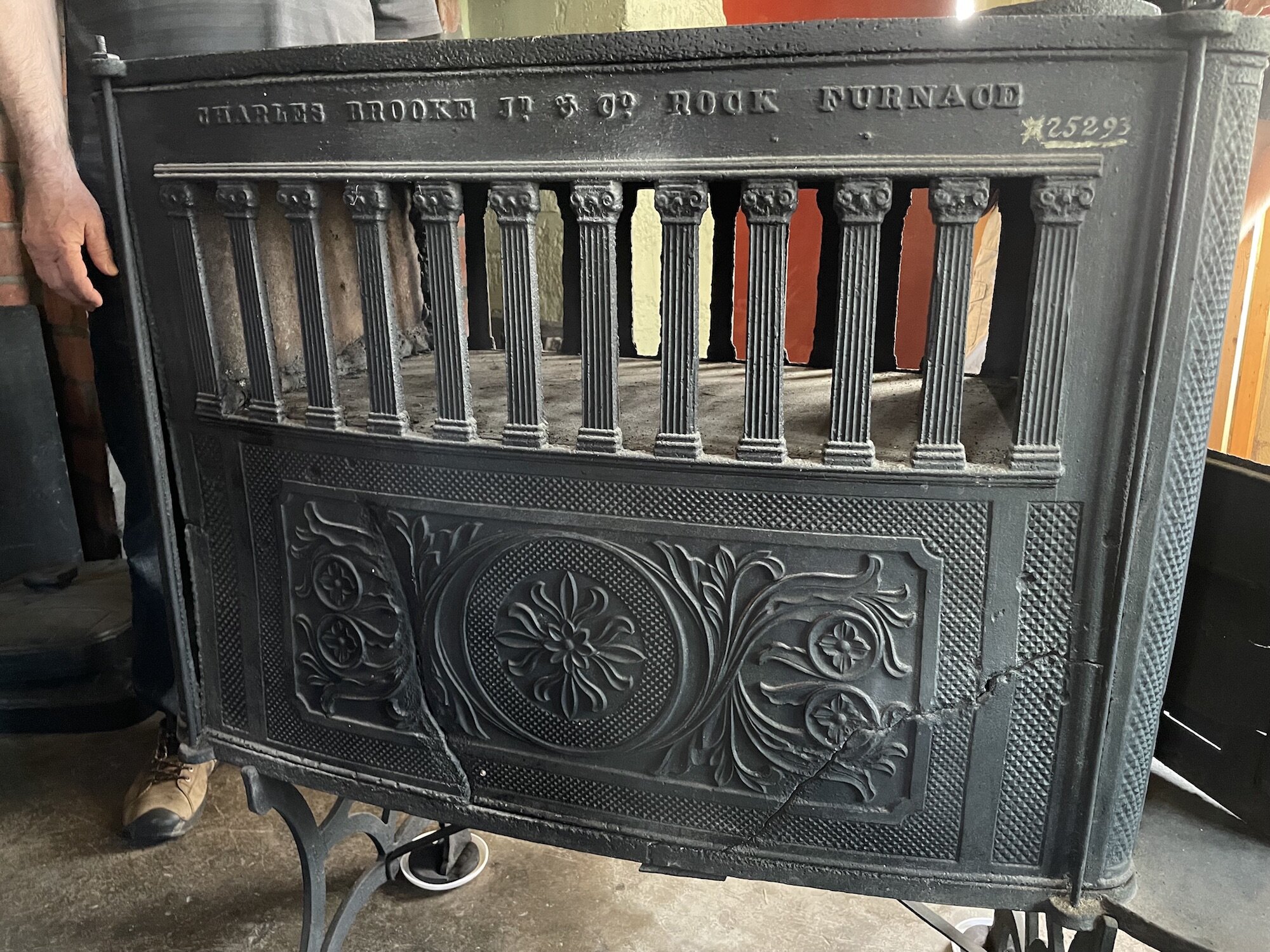Uncovering Treasures at the Mercer Museum
As a member of Plumstead Friends Meeting and a history enthusiast, I’ve often pondered about the history and origins of our meetinghouse. The Plumstead Friends Meetinghouse was built in 1752, and rebuilt in 1875. Its location–facing away from Point Pleasant Pike–and its architecture left me with many questions that I resolved to answer during the pandemic. Although the minutes of Plumstead Preparative Meeting have been lost, the Buckingham Monthly Meeting minutes detailing Plumstead’s reports are available online at ancestry.com–to the tune of thousands of pages, spanning over 200 years. Another helpful resource, also available at ancestry.com, is a booklet prepared in 1953 to celebrate the 225th anniversary of Plumstead’s founding.
Reviewing the minutes and other contemporaneous documents was a spiritually rewarding experience for me. I learned of weighty Plumstead Quaker Cephus Child, who walked 150 miles from below Baltimore to his home in Plumstead Township, and who later lost all four of his young children in a house fire. I learned how Friends struggled to maintain their pacifism during the French and Indian War, and the anguish over the Quaker leaders who were imprisoned in Lancaster (and one hanged) for their pacifism during the American Revolution. I learned about the books Friends found inspiring and their desire to help the disadvantaged. My research continued through the divisiveness of the Schism, and into the present time.
Plumstead’s membership contracted during the early to mid-1800s, and the preparative meeting was laid down in 1868. Membership was transferred to Buckingham Preparative Meeting, but worshippers still gathered at Plumstead as an indulged meeting. Seven years later, the meetinghouse was rebuilt, in an optimistic attempt to attract newcomers.
Looking through an old Plumstead ledger book at the Bucks County Historical Society, I was surprised by an entry from 1939 that read “sold stove to the Mercer Museum.” This turned out to be an elaborate cast iron stove of unusual construction that had been purchased by Plumstead as part of the 1875 rebuilding. I contacted the collections manager at the museum, who was able to locate where the stove was stored, and was also able to provide some research that Henry Mercer had done for his publication entitled The Bible in Iron. I was able to share with them some previously unknown purchasing details that I had gleaned from the 225th anniversary booklet.
While the stove is not currently on display at the museum, on June 16, 2021 a small group of Quakers was given the opportunity to visit Plumstead’s iron stove, a touchstone to the meeting’s past. The beautiful stove, badly cracked from her years of service, is now well over 150 years old.
Over time, this research project has expanded to include contributions from other members of Plumstead Meeting, as well as from members of Buckingham and Doylestown Meetings. What started out as the effort of a single person has now grown to include a community, and eventually will to be put into print.
Carol Ann Gray is the author of Fourteen Quaker Meetinghouses: A History of Bucks Quarterly Meeting As Seen Through the Lens of William E. Collier. Carol Ann’s next book, a history of Plumstead Friends Meeting, should be published later this year.

